In this blog post I look at the reasons for reusing materials and textiles, as I have done throughout this project. Whilst the demand for textile products is steadily increasing, how can we make the textile industry considerably more sustainable in response to a growing population and further economic development? The Textile industry holds great power in altering the purchasing power of the consumer, and as designers this is important to tap into not only the supply chain, but also the production of textile materials.
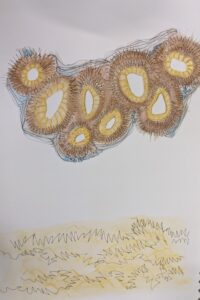
Firstly, I looked at how the Textile industry is currently having an impact. The industry is facing tremendous environmental and resource challenges. The current methods of creating materials for production are unsustainable. Around 63% of all textile fibres produced are derived from petro-chemicals which constitutes for a considerable amount of carbon dioxide production. On top of this, these materials are not biodegradable meaning that they would not naturally degrade amongst the environment. Furthermore, the gradual breakdown of these materials would result in the release of potentially harmful chemicals that have been used on the material (such as from dyeing, printing or finishing of the textile). The remaining 37% of textile fibre production is dominated by cotton. Cotton requires a great amount of water processing in production, using up valuable resources and land. An example of this loss of resources would be the desiccation of the Aral Sea, which due to water being diverted for manufacturing and consumer purposes, the lake has greatly depleted in size, resulting in a major environmental crisis.

Additionally, harmful waste and toxic chemicals cause further problems for the textile industry. We rarely stop to think and consider the journey that our clothes have made from plant or fibre to garment, and what we are actually placing over our bodies, using for our furniture or gifting to our loved ones. We already have so much available to us as potential textile fibres and materials. The path to a more sustainable textile industry can be categorised as textile REUSE and Textile RECYCLING.
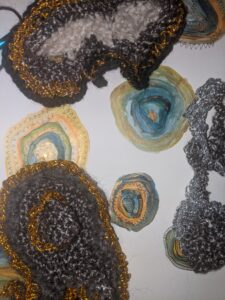
Textile REUSE – Charity shops, borrowing, inheritance, garage sales, second hand shops etc
Textile RECYCLING – reprocessing of textile waste for a new textile or non-textile product.
Trend forecasting for 2021/2022 predicts a surge in environmentally focused textile production with a larger emphasis on home craft, upcycling and textile recycling to create and maintain more meaningful garments and interiors. I applied this to my theme and decided to use only materials and fibres collected and sourced from old projects and charity shops. I was amazed by the possibilities opened up to me, with some charity shops even featuring a wool or knit section in their shops, dedicated to discarded yarns for repurposing. Where possible, i looked to these first before deconstructing potentially useful and functioning garments. Mainly I sourced my yarns from scarves which had been plyed already and had interesting knitted textures which created contrast and had interesting possibilities for me to work with. this also fulfilled this idea of mine to create expressive garments that were individualistic and met with the 2021/2022 consumerist desire to maintain unique styles and express individuality.
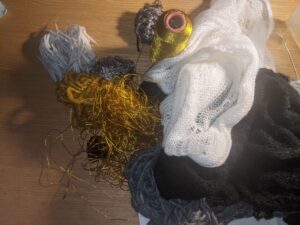
Sources –
https://www.sciencedirect.com/science/article/pii/S0959652618305985https://www.google.com/search?q=reusing+yarns&oq=reusing+yarns+&aqs=chrome..69i57j0i22i30i457j0i22i30.2834j0j4&sourceid=chrome&ie=UTF-8#kpvalbx=_OiPOX7TYBZPD8gLI6L_IBw8https://blog.weareknitters.com/knitting-tips/how-to-reclaim-used-yarn/
Below I have bullet pointed my main areas of inspiration and discovery for this project, collated from my research.
- Contrast – Comfort and practicality
- Work from home-wear – versatile clothing that adapts to protect, comfort and show off/dazzle
- Silver linings – looking on from 2020, past COVID and lockdown, clothing for a reemergence to the outside world.
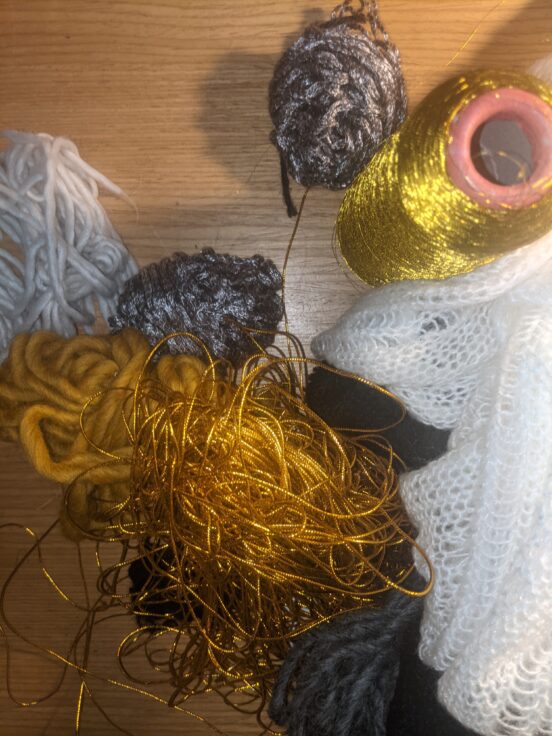

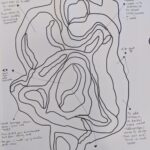
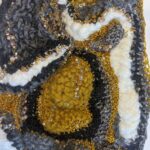
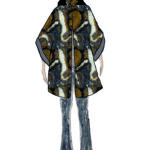
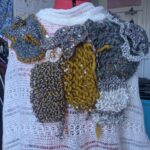
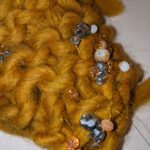

lrichar3
13 December 2020 — 8:45 am
Really interesting and well informed post. Have a wee look at puting links to the research articles that you are looking at directly into your text.